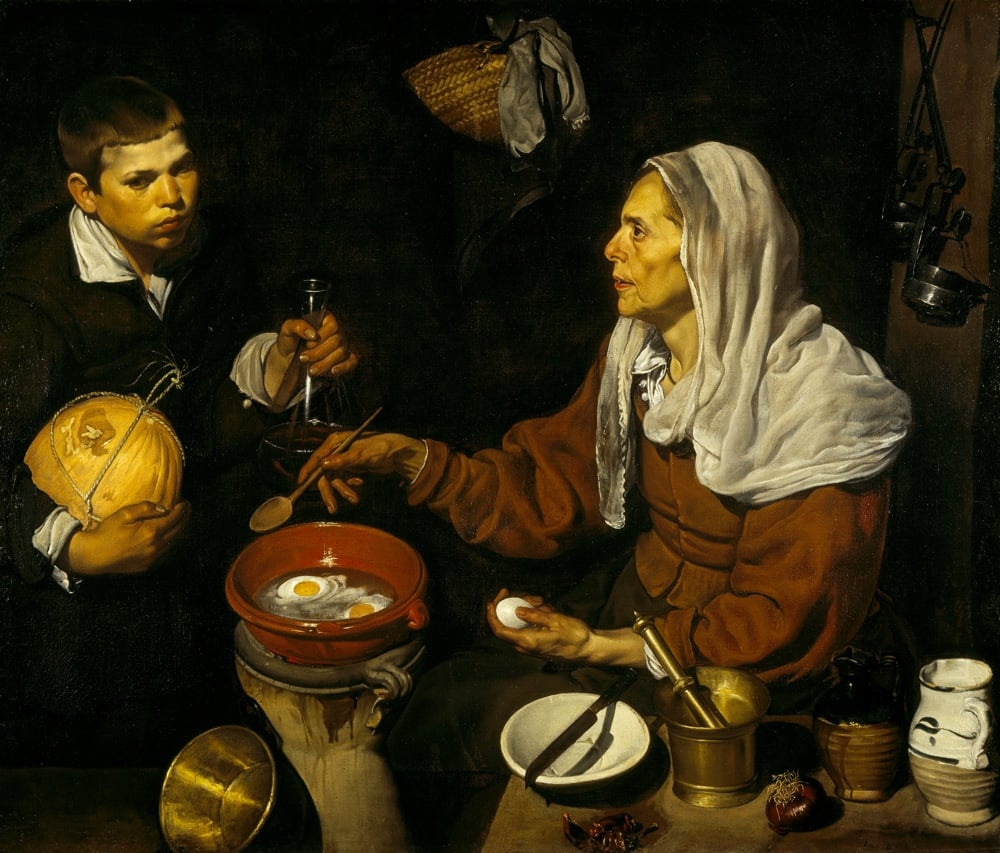What did 17th century food taste like?

Can art history help us understand how food tasted in the 1600s? Not really, but it can shed some light on what people cooked and what kinds of foods were available.
What can we learn about how people ate in the seventeenth century? And even if we can piece together historical recipes, can we ever really know what their food tasted like?
This might seem like a relatively unimportant question. For one thing, the senses of other people are always going to be, at some level, unknowable, because they are so deeply subjective. Not only can I not know what Velazquez’s fried eggs tasted like three hundred years ago, I arguably can’t know what my neighbor’s taste like. And why does the question matter, anyway? A very clear case can be made for the importance of the history of medicine and disease, or the histories of slavery, global commerce, warfare, and social change.
By comparison, the taste of food doesn’t seem to have the same stature. Fried eggs don’t change the course of history.
Maybe fried eggs don’t, but spices did. Coffee beans did. Cacao beans, potatoes, and tomatoes did. Europe was in such a hurry to upgrade the flavor of its bland, rotten food that it colonized most of the world, waged wars, enslaved millions, and invented the multinational corporation.
See also Tom Standage’s An Edible History of Humanity and Charles Mann’s 1493. (via @robinsloan)





Stay Connected